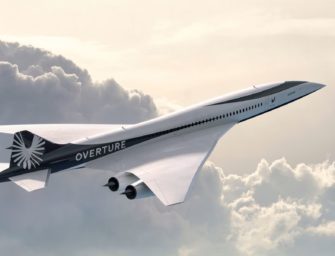Beyond the Sea: The French Startup Bringing Wind Power Back to Shipping
In an age obsessed with electric cars and hydrogen planes, one French company decided to do something beautifully simple: bring back the wind. Beyond the Sea, founded in 2014 by legendary sailor and engineer Yves Parlier, is on a mission to reinvent maritime transport using giant kites. Yes—kites. Not the kind you flew on the beach as a kid, but aerodynamic wings capable of towing boats, fishing vessels, and even cargo ships across the ocean.
How a Former Offshore Racing Legend Is Changing Maritime Transport
The idea was born from a sailor’s frustration. During many offshore races, Parlier experienced dismastings—moments when a boat loses its mast and becomes powerless. In those emergencies, he began experimenting with kites as a last-resort propulsion system. The experiments turned into a vision, the vision became a project, and the project eventually became Beyond the Sea.
Today, the company is based on the Arcachon Bay in southwestern France, and while it’s still a startup, it has attracted public funding, investors passionate about climate solutions, and the attention of shipowners who are beginning to take emissions seriously.
Beyond the Sea’s products are designed around the same principle: take the wind that already surrounds us and turn it into clean, free propulsion. Their smallest kite, called LibertyKite, is aimed at small sailboats and fishing vessels. It’s simple, intuitive, and can serve as a backup sail in case of engine failure. On the other end of the spectrum is SeaKite, a fully automated system for large yachts, trawlers, and commercial ships. No sailor standing on deck is needed—SeaKite deploys automatically, adjusts its trajectory using sensors and algorithms, and retracts when conditions demand it. Somewhere in between sits DynaKite, a semi-automatic version for mid-sized vessels.
The promise is huge: up to 20–30% fuel savings in real-world conditions. That means lower emissions, lower costs, and a cleaner industry without having to redesign ships from scratch. All the system needs is a bit of deck space and a willingness to let the wind do the work.
Wind Propulsion: A Real Alternative for Decarbonizing Cargo and Fishing Fleets
Beyond the Sea’s strategy isn’t to wait for the perfect technology—it’s to scale step by step. First, prove the concept on pleasure boats. Then, test on dedicated demonstrators like the SeaKite catamaran. After that, target commercial fleets that are under pressure to decarbonise. The company sees its kites not as the replacement for engines, but as an accessible and immediate way to cut emissions while the world waits for hydrogen, ammonia, or whatever the next marine fuel will be.
But the road is not perfectly smooth. Shipowners are conservative and reluctant to add unfamiliar equipment to their vessels. Crews need training. Automation must be bulletproof. And startup economics are unforgiving: Beyond the Sea needs scale to survive, not just prototypes and press articles.
Yet the timing could not be better. Shipping is responsible for about three percent of global CO₂ emissions, and new regulations are forcing shipowners to act fast. Wind-assist technologies are suddenly back in the spotlight—not as nostalgic relics, but as modern climate tech.
If Beyond the Sea succeeds, the future of shipping won’t just be about batteries or biofuels. It may once again be powered by something humans have relied on for centuries: the invisible force of the wind, cleverly reshaped for a world that urgently needs to change direction.
Photos : beyond-the-sea.com
















There are no comments
Add yours